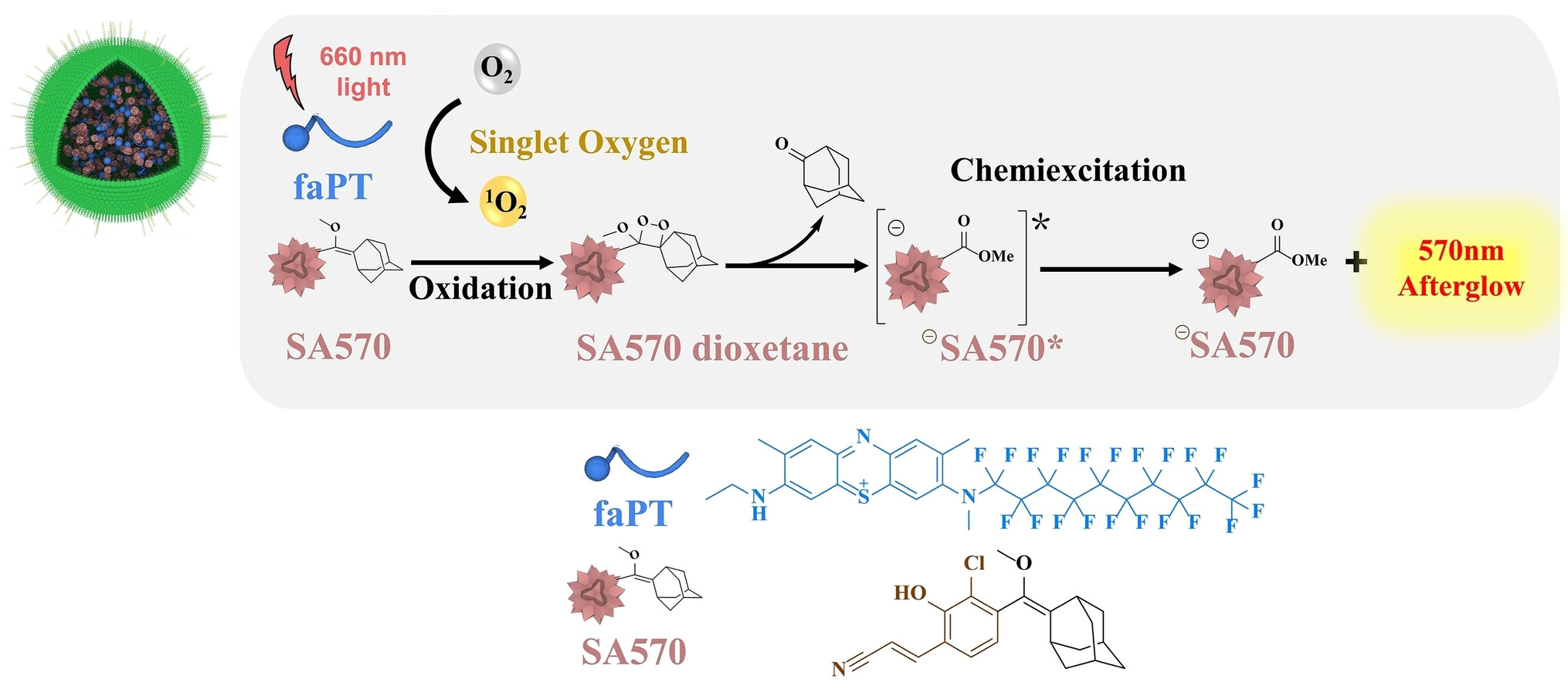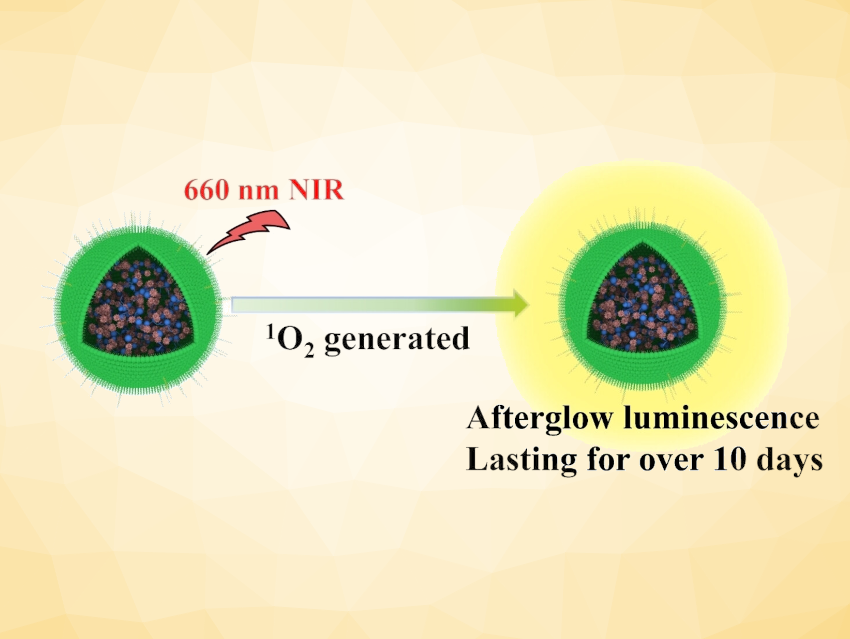An afterglow luminescent nanoprobe opens up new possibilities for imaging living cells. Ping Gong, Lintao Cai, Pengfei Zhang. Shenzhen Institutes of Advanced Technology, Chinese Academy of Sciences, and University of the Chinese Academy of Sciences, Beijing, Safacan Kolemen, Koç University, Istanbul, Turkey, and colleagues have developed a “nanotorch” that can continue to luminesce for over ten days after a single excitation. This allows the tracking of cell-based “microrobots” through the body in real time. In addition, the nanotorch can be “recharged” non-invasively with near-infrared (NIR) light.
Cell-Based “Microrobots”
Macrophages are important immune cells that “eat” bacteria and are involved in the disposal of cancer cells. In addition, they can take up drugs and transport them into cells, including tumor cells. If they take up magnetic nanoparticles, macrophages can be guided by a magnet to a target area within the body, such as a tumor. This allows macrophage “microrobots” to reduce the side effects associated with chemotherapy.
It would be useful to be able to track the microrobots over time as they move through the body. Fluorescence imaging techniques have been considered but require constant external irradiation. This causes a high level of background noise resulting from the autofluorescence of many biomolecules. In addition, the limited penetration depth of visible and UV light through tissues required into the tissue limits the depth of detection.
Probes with an Afterglow
One alternative could be the use of probes that can be irradiated before the procedure and produce an afterglow. However, inorganic nanoparticles with long-lasting afterglow harbor the risk that heavy metal ions will leak out, and organic compounds generally only luminesce for a short time and cannot be repeatedly excited.
The team developed a “rechargeable nanotorch” to tackle this problem. It is made of multiple components: nanoparticles of a precursor to a luminescent organic molecule (SA570, pictured below), a photosensitizer (faPT, a methylene blue analogue, pictured below), and polyethylene glycol equipped with cell-penetrating peptides.

The photosensitizer absorbs NIR light and excites surrounding oxygen molecules. This highly reactive singlet oxygen then binds to the precursor and forms a dioxetane group, a four-membered ring made of two oxygen and two carbon atoms. This undergoes a rearrangement that releases the desired luminescent molecule and emits excess energy by luminescing. After the initial irradiation, the nanotorches continue to luminesce for ten days.
Recharging with NIR Light and Tracking
Once depleted, the nanotorches can be non-invasively recharged and made to luminesce again by external radiation with NIR light, which can penetrate deep into tissues. The probes can be recharged multiple times. This requires the relative amounts of photosensitizer and luminescent molecule precursor to be selected so that only some of the precursors are activated with each irradiation and allows for imaging over longer periods of time.
The team introduced these new nanotorches into macrophage-based microrobots and were able to follow their magnet-guided path through the bodies of mice in real time through the luminescence signals.
- Rechargeable Afterglow Nanotorches for In Vivo Tracing of Cell‐Based Microrobots,
Gongcheng Ma, Musa Dirak, Zhongke Liu, Daoyong Jiang, Yue Wang, Chunbai Xiang, Yuding Zhang, Yuan Luo, Ping Gong, Lintao Cai, Safacan Kolemen, Pengfei Zhang,
Angew. Chem. Int. Ed. 2024.
https://doi.org/10.1002/anie.202400658




